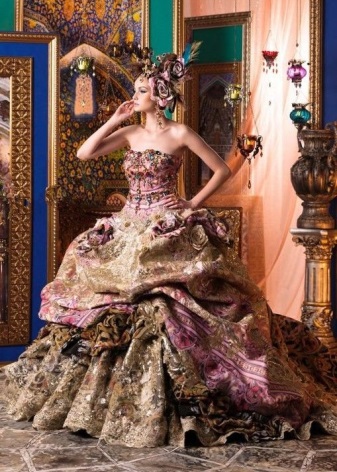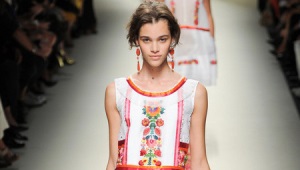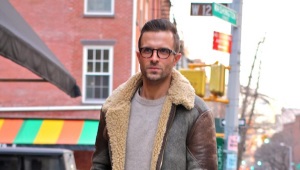Rococo style in clothes

Rococo is a charming and incredibly flirtatious style. The name "Rococo" comes from the French term "rocaille", which denoted decorative stone or shells, because initially this style was used in the interior, and only after in clothes.
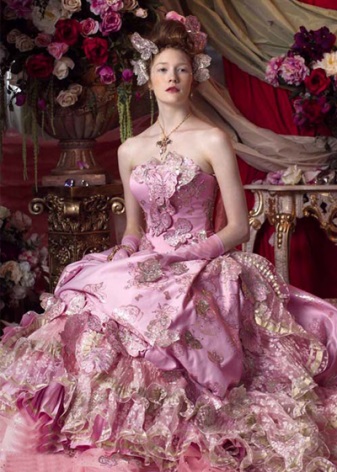
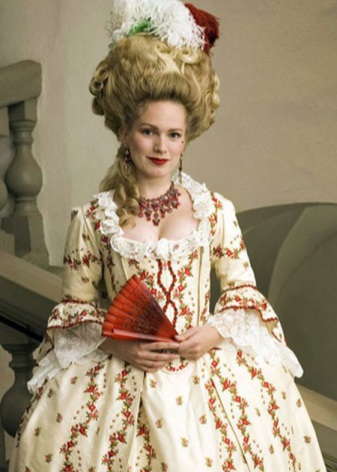
This direction came from the 18th century, when pompous baroque clothes were replaced by no less magnificent, but calmer outfits. This “calmness” was expressed in the colors of the products, which, as a rule, are wardrobe items of discreet pastel shades. Rococo clothing is elegant and light, it is a luxurious palace style and feminine elegance.
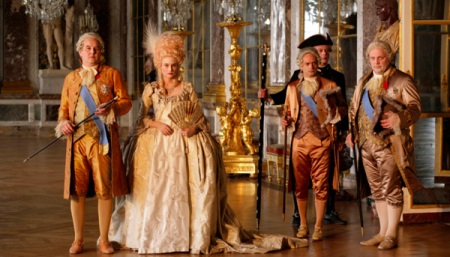
Peculiarities
Rococo style in clothing is characterized by the following features.
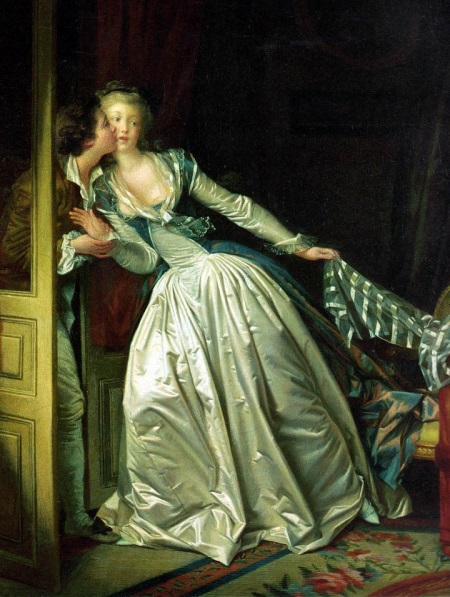
Perfect waist. A thin waist has long been the pride of every girl, but not every lady had a wasp waist. In this case, the women of the Rococo era had their own little trick - a corset! With the help of this element of the wardrobe, the ladies formed a chiseled waist for themselves, even at the cost of their own health. After all, the constant use of a corset entailed not only uncomfortable sensations. Corsets of that time, with constant wear, could greatly deform the skeleton.


Gloves, stockings and a fan. The fan could be variously decorated with ruffles, lace or fringe. But if the fan was considered an additional item of the whole image, then gloves made of light silk and stockings belonged to the obligatory attributes of a rococo style outfit.
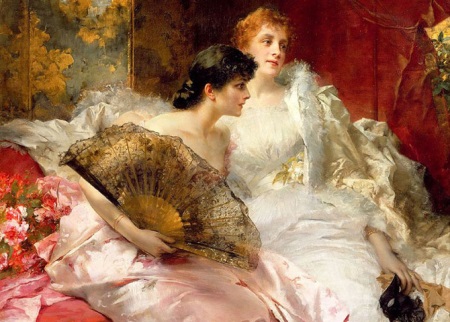
Flowers. Initially, artificial flowers embroidered with silk were used. Along with them, the dresses and hairstyles of the ladies were decorated with fresh flowers. After a while, the female ensemble was decorated with jewelry in the form of flowers, or various diadems depicting bouquets made using precious stones and metals.
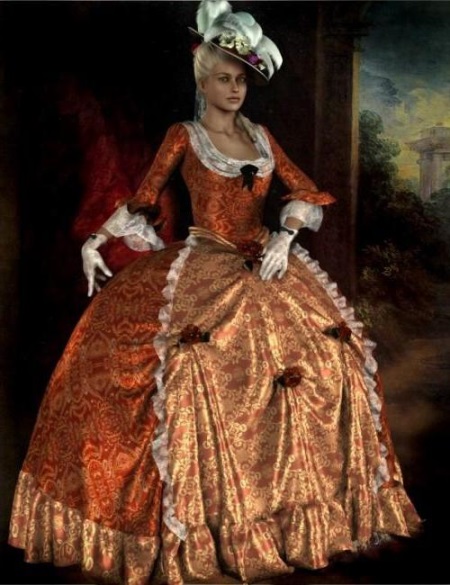
Fluffy dresses and skirts. The already puffy dresses inherent in the Rococo style were complemented by no less puffy skirts. Skirts, like dresses, were decorated with all the details inherent in Rococo: live and artificial flowers, ruffles, ribbons and bows.

The ensemble was complemented by puffy skirts called "pannier", which translates as "basket". This incredibly voluminous detail, together with the waist pulled down by the corset, turned the silhouette into the shape of an inverted glass.
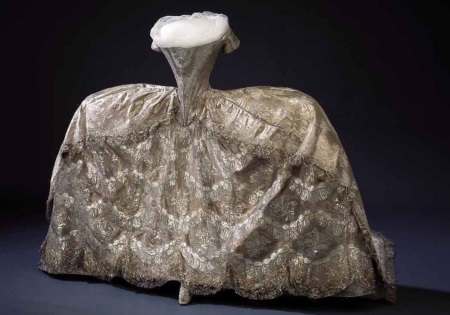
Hoops in a dress. This element is inherent in the second half of the 18th century, when, with the help of hoops, the dress began to take on an oval rather than a round shape.
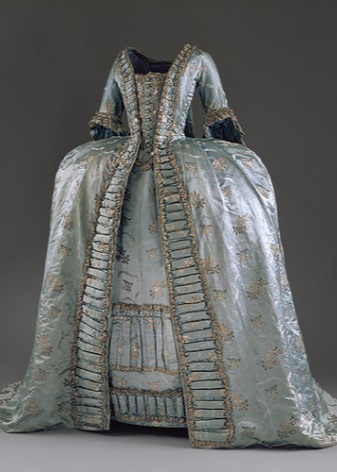
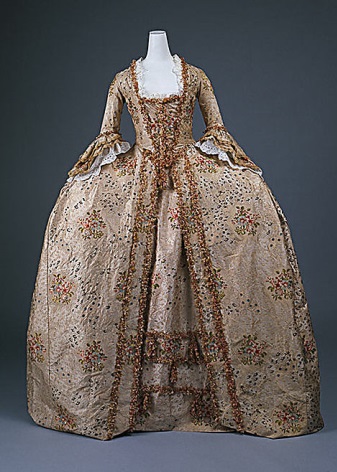
Distorted lines. The Rococo style is characterized by a certain distortion of the natural figure. This is manifested in an unnaturally thin waist, fragile shoulders, a round face and an unusual transition from the waist line to the hips.
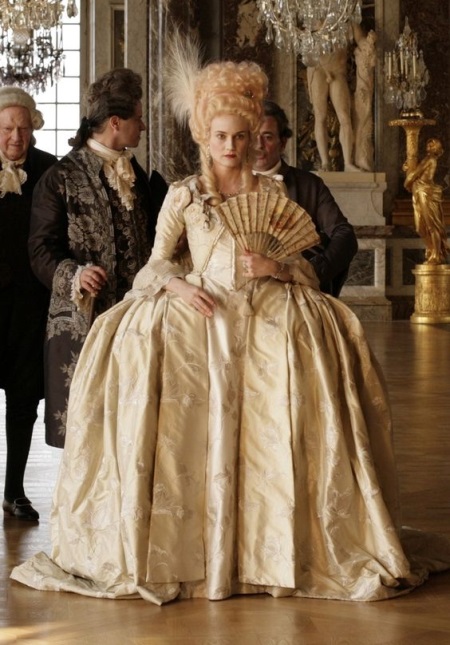
Color. The main positions in the wardrobe were given to pale shades. It could be pale blue, soft pink or light yellow.
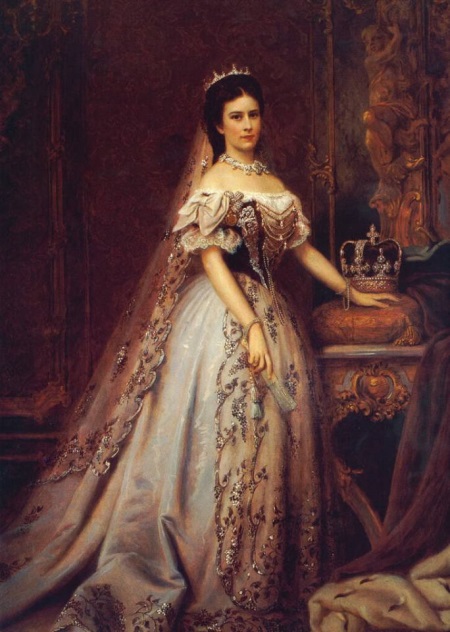
Asymmetry. It was typical in the outfits of both women and men. Along with wardrobe items, an emphasis on asymmetry could be present in the hairstyle or accessories.
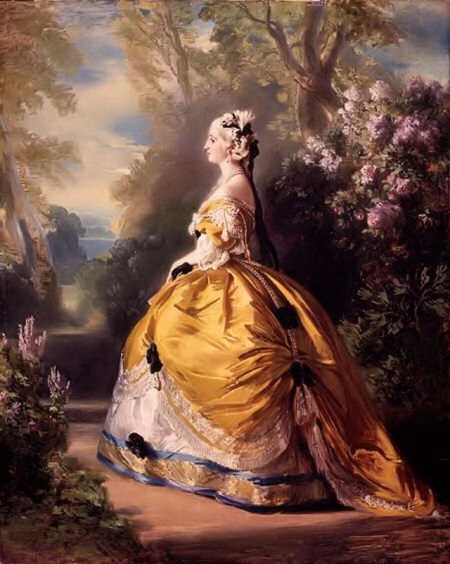
Underwear and bodice. As for underwear, it was performed very luxuriously. As you know, the dress of the Rococo era allowed the linen to “peep out” from under the outfit, so it was chicly embroidered: silk, silver, gold and lace. The bodice was distinguished by its elongated shape in the form of a triangle.
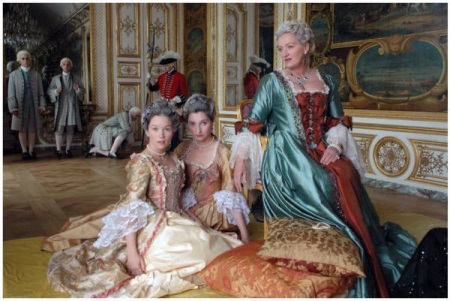
Materials. The most common materials from which Rococo dresses were created were chintz and satin.

Sleeves. The sleeves of the products were richly decorated with ribbons and lace. The cut of the sleeve was distinguished by narrowing to the elbow.
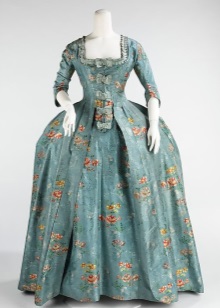

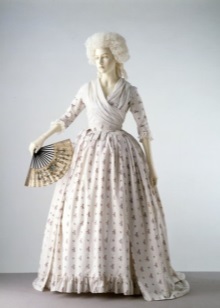
In modern clothes
Modern clothing is significantly different from the original rococo outfits. Of course, it is possible that at some masquerade there will be a magnificent image with elements inherent in this style.
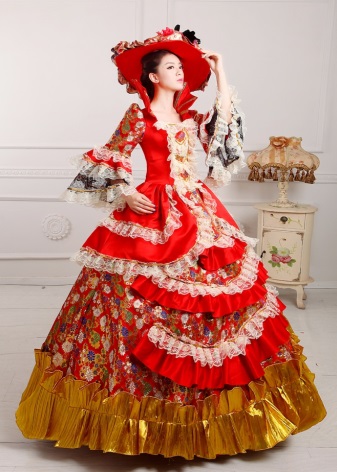
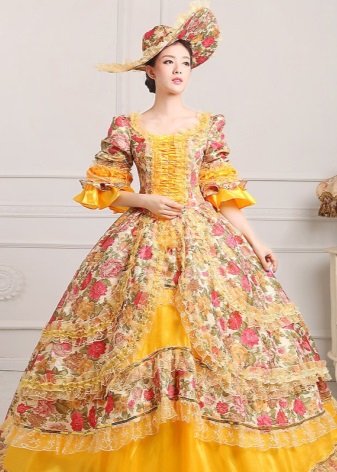
Clothing of modernity in the Rococo style is distinguished by the presence of dark shades in the color scheme. If earlier rococo did not assume brown, gray and even black colors, then the modern interpretation of the style allows you to create outfits in these shades.
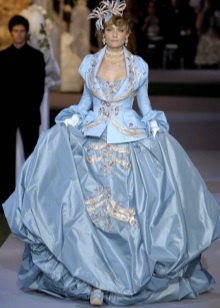

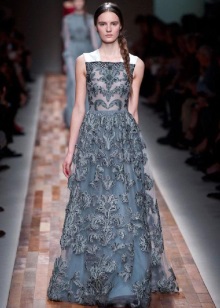
Now, as before, a thin waist and open, fragile shoulders are some kind of hallmark of Rococo. Sexuality and sophistication inherent in this style is present to this day, this is clearly expressed in dresses with corset lacing.
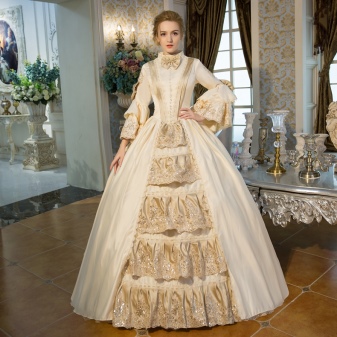
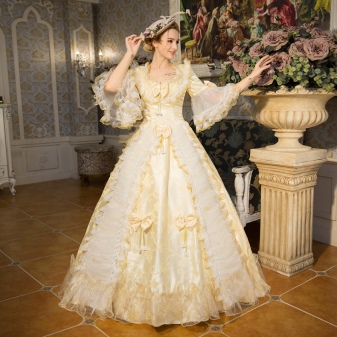
The decor of modern rococo dresses is decorated with all the same elements inherent in this direction. It can be flowers, bows, ruffles, ribbons or fringes. Rococo outfits make great use of the stars. For example, Lady Gaga willingly puts on stage costumes not only in the avant-garde style, but also actively uses rococo.

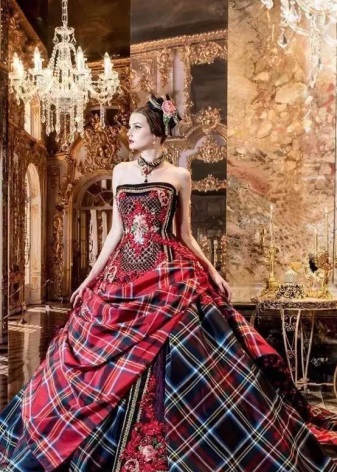
The most suitable event today for a vivid representation of the Rococo style is a wedding. Of course! What could be more attractive than a light, romantic bridal outfit? The classic wedding dress in its style repeats the original Rococo style attire. The “inverted glass” today is almost the main silhouette of a wedding dress.
The corset helps to hide the existing figure flaws, and the fluffy skirt itself will hide full hips or unnecessarily thin legs.
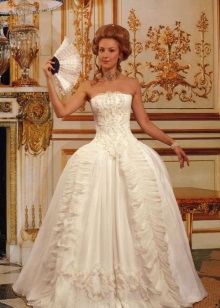
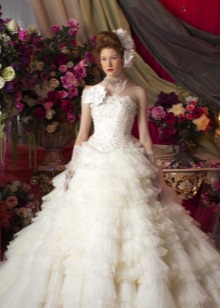
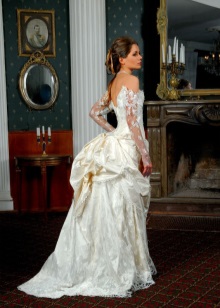
Rococo involves the use of many different accessories. Today, adhering to this style in clothes in modern fashion, one must not forget about the presence of jewelry in the image. Rococo accessories are always voluminous with many stones and other embellishments. As before, hairstyles are also decorated today: the use of a headband with rhinestones or the presence of a flower-shaped decoration in the hair will give out the rococo style at first glance.
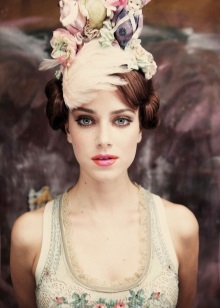
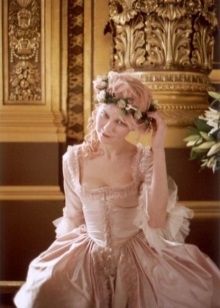
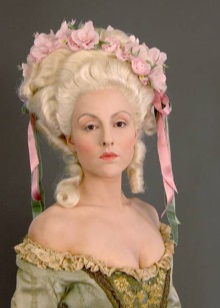
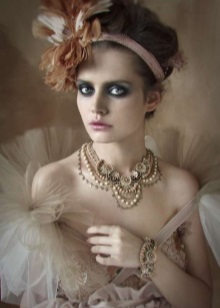
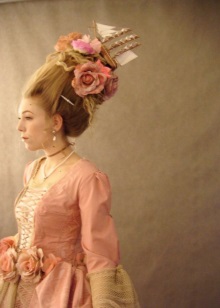

The use of an elegant handbag is welcome in modern Rococo. If earlier these were miniature "handbags-bags", today they have changed somewhat. The size goes a little beyond the “pouch”, and the bag is decorated with exquisite embroideries.

Paying attention and making a choice in favor of the modern rococo style, it is worth remembering that it is better to use other outfits to appear in a modern business society. After all, Rococo itself, like the era of its inception, is a frivolous and windy style.
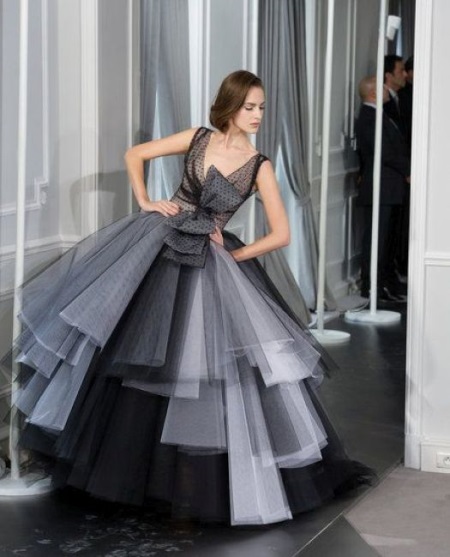
The mere appearance, for example, in the office in this outfit can spoil the impression of a person accumulated over the years. Therefore, it is worth approaching the choice of an image in the Rococo style with utmost attention and sober calculation.
